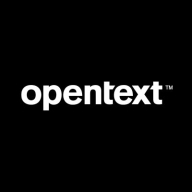

IBM Engineering Test Management and OpenText Application Quality Management are test management solutions. OpenText Application Quality Management has the upper hand with its superior features and comprehensive automation which justifies its higher price.
Features: IBM Engineering Test Management includes advanced test planning, execution tracking, and seamless integration with other IBM tools. OpenText Application Quality Management offers comprehensive test automation, detailed reporting, and robust automation support.
Room for Improvement: IBM Engineering Test Management could enhance user interface intuitiveness, expand integration capabilities with third-party tools, and offer more customization options. OpenText Application Quality Management might improve by simplifying its deployment process, enhancing usability for non-technical users, and reducing its complex pricing structure.
Ease of Deployment and Customer Service: IBM Engineering Test Management provides straightforward deployment and extensive customer support. OpenText Application Quality Management requires more initial setup but offers strong support and guidance throughout the deployment phase.
Pricing and ROI: IBM Engineering Test Management is cost-effective, particularly for existing IBM product users, showing substantial ROI. OpenText Application Quality Management involves a higher initial investment, but its advanced functionalities promise long-term value.
It acts as an enabler for effective test and program management.
Technical support has been excellent.
Quality is always high yet not perfect.
I am mostly happy with the technical support from OpenText ALM _ Quality Center.
OpenText ALM Quality Center is definitely scalable.
From a stability standpoint, OpenText ALM Quality Center has been pretty good.
Improvements are needed so that the system can continue running without creating a new run.
HPLM has one of the best UIs compared to other test management tools, allowing for efficient navigation between test pieces, test folders, test suites, and test execution.
The user-friendly nature could be enhanced as the interface isn’t intuitive.
It would be cheaper to use a cloud model with a pay-per-use licensing model.
It creates constant visibility into the test process, showing the status, bugs, and automated test results.
The integration with internal applications and CollabNet is made possible through exposed APIs, allowing necessary integrations.
We can create a requirement for stability metrics with the test cases to ensure all requirements are covered.
| Product | Market Share (%) |
|---|---|
| OpenText Application Quality Management | 9.0% |
| IBM Engineering Test Management | 3.1% |
| Other | 87.9% |
| Company Size | Count |
|---|---|
| Small Business | 1 |
| Midsize Enterprise | 3 |
| Large Enterprise | 7 |
| Company Size | Count |
|---|---|
| Small Business | 39 |
| Midsize Enterprise | 32 |
| Large Enterprise | 161 |
IBM Engineering Test Management (ETM), formerly known as IBM Rational® Quality Manager (RQM), is a business-driven software quality environment designed for collaborative and customizable test planning, workflow control, tracking, and metrics reporting. When integrated with IBM DevOps Test Embedded (Test Embedded), ETM allows users to create test environments and scripts, deploy and run tests, and view HTML reports. This integration enables the creation of ETM test environments linked to Test Embedded target deployment ports, the deployment and execution of Test Embedded tests through the ETM interface, and the mapping of ETM test scripts to Test Embedded test suites. Additionally, users can import test suites as ETM test scripts, build new ETM test cases, and view test results as HTML reports within ETM. The integration requires the Test Embedded adapter service to be running on the user's computer.
OpenText Application Quality Management offers centralized data management, traceability, and integration capabilities. It aids in handling requirements, test planning, and defect tracking while supporting both manual and automated testing. Challenges exist in deployment and browser compatibility.
Known for its robust reporting and flexibility, OpenText Application Quality Management is tailored for large organizations requiring a comprehensive solution supporting lifecycle coverage and seamless tool integration. Users can consolidate testing processes, manage requirements, and centralize reporting across manual and automated testing. While some face issues with project tracking, outdated interfaces, and limited browser compatibility beyond Internet Explorer, it remains widely used for regression and performance testing. Integration with tools like JIRA and support for tools such as UFT and ALM PC underscore its utility.
What are the key features of OpenText Application Quality Management?In industries such as finance and healthcare, OpenText Application Quality Management is implemented to ensure rigorous testing standards. It supports test case creation and execution, defect tracking, and requirements management. Integration with JIRA and performance testing tools make it suitable for organizations needing synchronized testing environments.
We monitor all Test Management Tools reviews to prevent fraudulent reviews and keep review quality high. We do not post reviews by company employees or direct competitors. We validate each review for authenticity via cross-reference with LinkedIn, and personal follow-up with the reviewer when necessary.